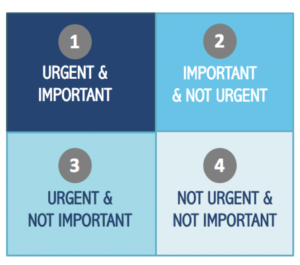In addition to potentially implementing three different models for learning in the next school year, Minnesota K-12 schools also will need to become master communicators.
School districts need to provide coordinated, clear messaging, systems and plans. In all communications, inform your staff and school board first before sharing with parents and students and your broader community.
Key Steps
Help your families understand what to expect and navigate changes due to the COVID-19 pandemic by following these key steps:
1. Coordinate and streamline communications
Preparation is key. Distribute as much communication as you can from the top – from the superintendent for the entire district. Identify spokespersons and flow communication through them. As needed, principals should share communication for their respective buildings. Be coordinated at all levels with your response.
2. Map communications
Districts, schools and teachers have a wealth of information they want – and need – to share with families to implement hybrid learning. Create a map of this information to help prioritize it. Messages on core subjects, for example, should be shared before messages on special or elective subjects. Don’t send everything in one day. Encourage the same process to be followed by building and by grade.
There is a lot of information you can share. Focus on what’s urgent AND important. This decision-making grid, developed by Stephen Covey, should be applied to communications.
 Based on this, your communications can be organized into four key tiers, in order of hierarchy:
Based on this, your communications can be organized into four key tiers, in order of hierarchy:
- Urgent and Important Communications
- Important Communications (that are not time sensitive)
- Urgent Communications (that are not mission critical)
- Not Urgent or Mission Critical
Keep in mind these words from Covey: “What is important is seldom urgent and what is urgent is seldom important.”
Crises typically fall into the first tier (or quadrant). However, not all your communications in your hybrid learning implementation should be considered urgent or important. Step back and assess all of your distance learning communications using this grid to help prioritize the information.
When executing hybrid learning, you will likely share urgent/important information (quadrant 1) at least daily and important/not urgent information (quadrant 2) at least weekly.
3. Break it down
Just like when teaching a lesson, schools need to break down the information in easy-to-understand components. Provide students and their families with what they need to focus
4. Set expectations
Take one step at a time and act as a tour guide for your families as they embark with you on this new adventure of hybrid learning. Communicate that it is your desire to guide parents through this, and together you will take one step a time. Be mindful of your tone in each communication and begin and end each message with a positive message. Schools – both through learning and your communications – provide stability for families during this unsettling time.
5. Establish a schedule for communicating
You want to create a comfortable rhythm in your communication with your parents – as superintendent and as a principal. Outline when and how you will provide standard communications and share your plans with your families.
Coordinate the superintendent and principal communications in terms or timing and content. Teachers also should set a schedule and this should be coordinated across the district.
6. Create a central information site
This was critical during distance learning, but as schools prepare to potentially move from three different models of learning in the 2020-21 school year, it becomes essential for students and parents to understand what to expect. Provide an overview of your plans for both distance learning and hybrid learning on your district website.
Also, create one place where where students and families can visit daily. You may need to move from one learning model to the next with short notice. Your central information site should be your one source for communication. Post your information here rather than relying on daily emails.
- Streamline the view. Make it easy to see the essential information without scrolling.
- Provide an overview of what families need to know for today.
- Establish a template for how this information is organized and shared.
- Set guidelines for how your teachers will update this information.
Do the work on the back end with your school staff for consistency so your information and directions are easy for your students and families to follow and act on.
……………………………
Taking Action
MREA developed extensive guides and resources to implement a new hybrid learning model with these key planning phases:
- Assess
- Pre-Plan
- Build New Master Schedules (with interactive worksheet)
- Implement and Operationalize
- Communicate
Stay Connected
Stay connected to news and resources on reopening schools in Minnesota: mreavoice.org/reopeningschools





